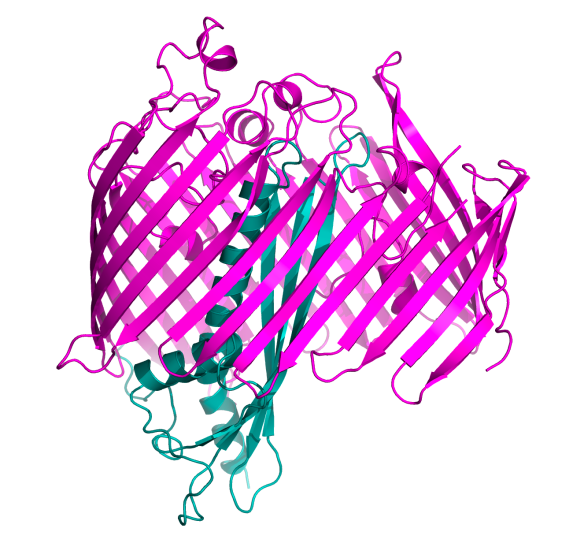"Roll out the Barrel" Structure of the LptD-LptE translocon complex from bacteria
What is it?
Lipopolysaccharide (LPS) is an essential component of the bacterial cell wall and protects bacteria against antibiotics. The LPS translocon complex, consisting of two proteins (LptD:LptE ) is critical for transport and insertion of these protective LPS molecules in the outer wall. Thus, targeting these essential proteins in the bacterial cell membrane may be a novel mechanism for developing antibiotics against multi-drug resistant bacteria.
What does it look like?
LptD (pink) forms a novel 26-stranded β-barrel, which is reportedly the largest β-barrel protein structure known to date. LptE (aqua) adopts a roll-like structure located inside the barrel of LptD. Together these proteins form a unique two-protein 'barrel and plug' architecture. LPS is passed sequentially from LptC to LptA and then to the LptD:LptE complex, and is finally inserted into the outer membrane of the bacterium.
For more information about this structure, and a movie showing the LptD:LptE complex, see http://www.diamond.ac.uk/Home/News/LatestNews/18-06-14.html

Image generated by Pymol (http://www.pymol.org/) using the coordinates from the protein data bank (accession code: 4N4R)
Where did the structure come from?
This structure of LptD:LptE complex from Salmonella typhimurium was determined using the Diamond Synchrotron Light Source and published in Nature in June 2014. Understanding the mechanism of LPS insertion into the outer membrane of bacteria may help develop novel antibiotics.






